Do You Know How to Use the 11 Varieties of Sugar?
Let’s talk sugar. When you think about it, what first comes to your mind? “SWEET!” right? While it does sweeten food and drinks, sugar does much more than that. Besides satisfying the sweet tooth, it adds flavor, texture, and decoration. It also works to make dough tender, provides stability for egg whites when making meringues and pavlovas, and helps baked goods achieve a nice golden-brown color.

What’s interesting, and maybe surprising about the world of sugar, is that there are 11 varieties. I had no idea. Turbinado and demerara, for instance; what’s the difference? And caster sugar—what IS that? Turns out, different sugars create different effects.
From white sugar to cane sugar to rich brown sugars, here is concise tutorial from cookbook author and Senior Editor for www.thekitchn.com, Kelli Foster. Kelli says that once we know what these are, as well as their various uses, we can have a lot of fun messing around with them—our baking can “rise” to a whole new level!
GRANULATED SUGAR. This is a highly refined, multi-purpose sugar. It’s also sometimes called refined, table, or white sugar. When people talk about “sugar,” this is usually what they’re talking about. Made from sugarcane and sugar beets, it’s also the most common type of sugar used in baking and cooking.
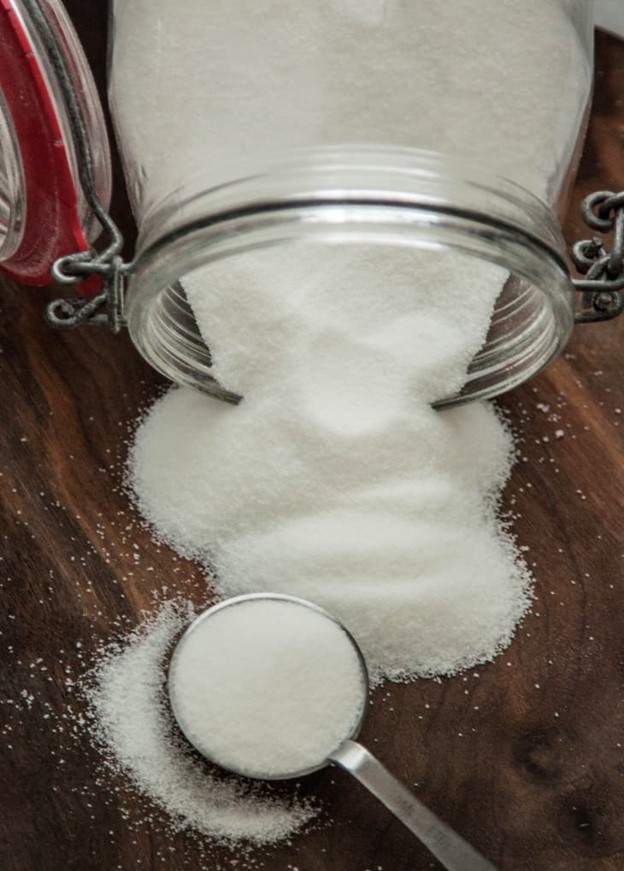
CASTER SUGAR. It’s a superfine granulated white sugar. Superfine crystals dissolve much quicker than standard granulated white sugar, so caster is ideal for making meringues, syrups, and cocktails.
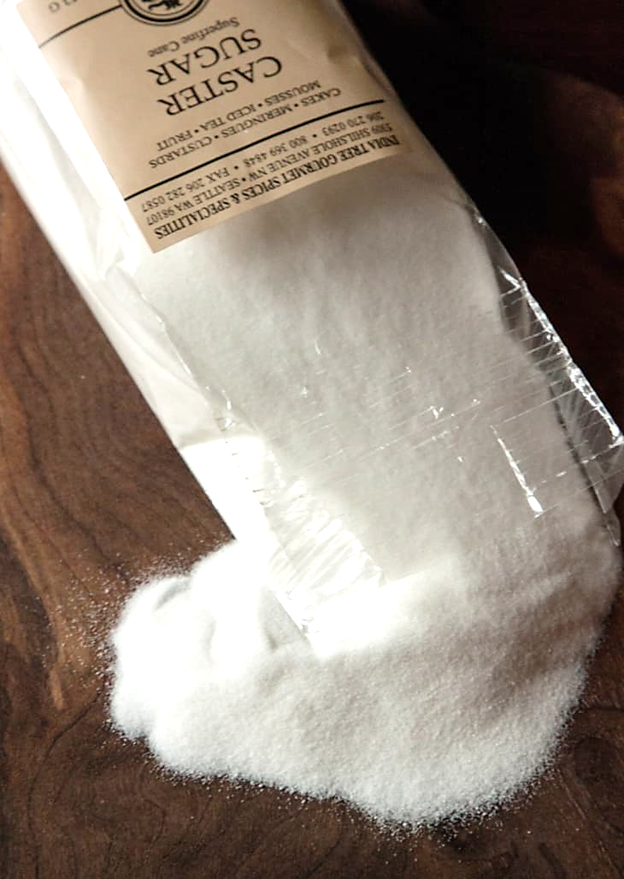
CONFECTIONERS SUGAR. Commonly known as powdered sugar and 10x sugar, it’s a type of white sugar that’s been ground into a fine powder. To prevent clumping, a small amount of cornstarch is typically blended in. It easily dissolves in liquid, so it’s ideal for making icing and frosting.
PEARL SUGAR. Sometimes called nib or hail sugar, pearl is a variety of white sugar that has a coarse, hard texture and an opaque color. It holds its shape and doesn’t melt when exposed to high temperatures. It comes in a variety of colors and is used solely for decorating pastries, cookies, and sticky buns.
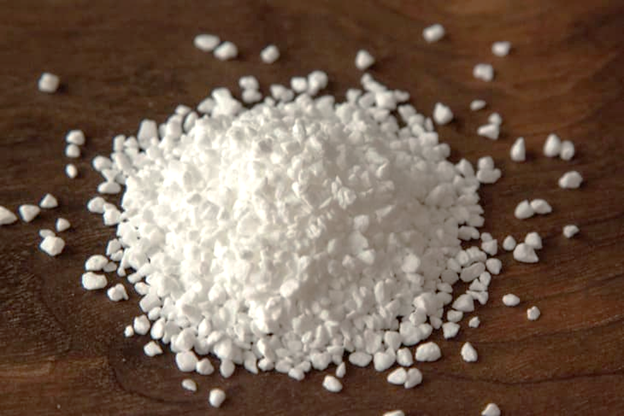
SANDING SUGAR. This is also used mainly for decorating. It has large crystals, which are fairly resistant to heat and add extra texture and crunch to cookies and other baked goods. You can also find sanding sugar in a variety of colors.
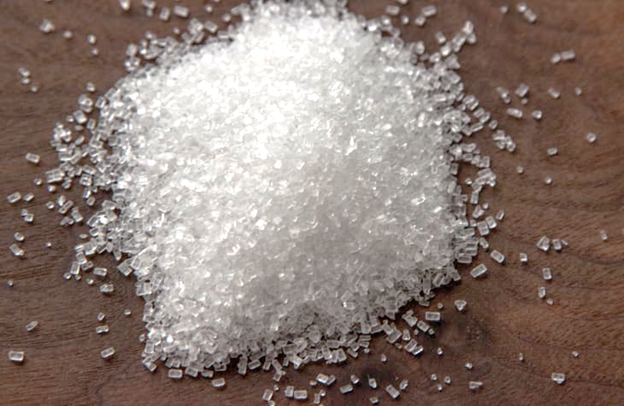
Sanding sugar is especially excellent in making sugared fresh fruits. Sugared raspberries, for instance, are an elegant touch for any dessert. They are at once crunchy and soft, bursting with sweetness and natural flavor. Best of all, you can apply this same technique to other seasonal fruits: Blueberries, Italian plums, blackberries, even rose petals are wonderful when sugared. You don’t need very many of these sparkling sweets — they are very potent.
(We thank Leela Cyd, another cookbook author and Kitchn contributor, for sharing this recipe.)
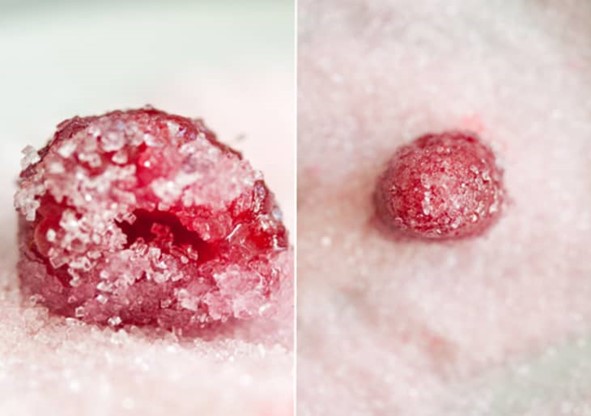
1 cup fresh raspberries (or other whole, small summer fruit such as blueberries, small strawberries or blackberries)
1 egg white
1/2 cup sanding sugar
Directions:
Add Recipe to Cook'n
CANE SUGAR. Only produced from sugarcane, “cane sugar” is minimally processed. It also has a slightly larger grain, darker color, and higher price tag. You can use it the same way you would granulated sugar. It really doesn’t create any different effects than its counterpart that’s highly refined. Health purists like the idea of its minimal processing, however.
DEMERARA SUGAR. This is another sugar popular with the health-conscious because it’s also a raw cane sugar that’s minimally refined. It has large grains with an amber color and a natural, subtle molasses flavor. People like it as a coffee or tea sweetener, or as a baked goods topping.
TURBINADO SUGAR. This is another type of minimally refined raw cane sugar. It has large, medium-brown crystals, and is often mistaken for standard brown sugar because of its color. But it’s not the same thing. Turbinado has a delicate caramel flavor and while it can be used successfully in baking, it’s commonly used to sweeten beverages.
MUSCOVADO SUGAR. Also referred to as Barbados sugar, muscovado is yet another variety of unrefined cane sugar. But muscovado retains all the added molasses. It comes dark or light and has a sticky, wet, sandy texture with a rich, complex flavor. While it can be used as a substitute for brown sugar, its flavor is much stronger. Because of that, it’s frequently used in barbecue sauce, marinades, and savory dishes.
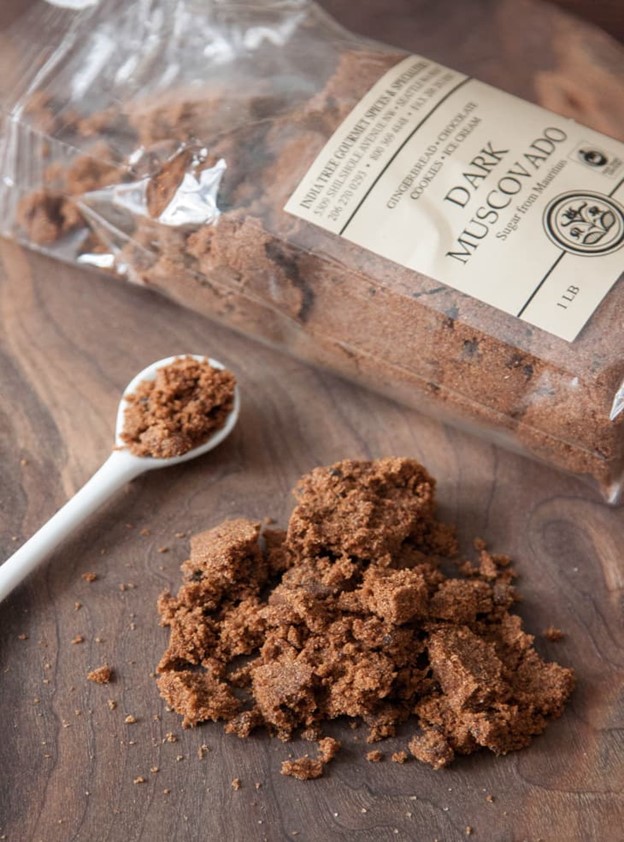
LIGHT BROWN SUGAR. Light brown is just refined white with a small amount of molasses added in. It has a wet, sandy texture — although less sticky than muscovado sugar — and a delicate caramel flavor. It’s used extensively in baking and when making savory dishes.
DARK BROWN SUGAR. Like its lighter counterpart, dark brown is refined white with even more molasses added in. This gives it a stronger, more intense flavor. Light and dark brown sugar are used interchangeably.
blog comments powered by Disqus

What’s interesting, and maybe surprising about the world of sugar, is that there are 11 varieties. I had no idea. Turbinado and demerara, for instance; what’s the difference? And caster sugar—what IS that? Turns out, different sugars create different effects.
From white sugar to cane sugar to rich brown sugars, here is concise tutorial from cookbook author and Senior Editor for www.thekitchn.com, Kelli Foster. Kelli says that once we know what these are, as well as their various uses, we can have a lot of fun messing around with them—our baking can “rise” to a whole new level!
GRANULATED SUGAR. This is a highly refined, multi-purpose sugar. It’s also sometimes called refined, table, or white sugar. When people talk about “sugar,” this is usually what they’re talking about. Made from sugarcane and sugar beets, it’s also the most common type of sugar used in baking and cooking.

CASTER SUGAR. It’s a superfine granulated white sugar. Superfine crystals dissolve much quicker than standard granulated white sugar, so caster is ideal for making meringues, syrups, and cocktails.

CONFECTIONERS SUGAR. Commonly known as powdered sugar and 10x sugar, it’s a type of white sugar that’s been ground into a fine powder. To prevent clumping, a small amount of cornstarch is typically blended in. It easily dissolves in liquid, so it’s ideal for making icing and frosting.
PEARL SUGAR. Sometimes called nib or hail sugar, pearl is a variety of white sugar that has a coarse, hard texture and an opaque color. It holds its shape and doesn’t melt when exposed to high temperatures. It comes in a variety of colors and is used solely for decorating pastries, cookies, and sticky buns.

SANDING SUGAR. This is also used mainly for decorating. It has large crystals, which are fairly resistant to heat and add extra texture and crunch to cookies and other baked goods. You can also find sanding sugar in a variety of colors.

Sanding sugar is especially excellent in making sugared fresh fruits. Sugared raspberries, for instance, are an elegant touch for any dessert. They are at once crunchy and soft, bursting with sweetness and natural flavor. Best of all, you can apply this same technique to other seasonal fruits: Blueberries, Italian plums, blackberries, even rose petals are wonderful when sugared. You don’t need very many of these sparkling sweets — they are very potent.
(We thank Leela Cyd, another cookbook author and Kitchn contributor, for sharing this recipe.)

Sugared Fresh Raspberries
Ingredients:
1 cup fresh raspberries (or other whole, small summer fruit such as blueberries, small strawberries or blackberries)
1 egg white
1/2 cup sanding sugar
Directions:
1. Select the firmest, plumpest raspberries to work with. This will help the final berries retain their shape and they’ll be less likely to turn into a juicy, sugar puddle.
2. Lightly paint egg white onto entire outer surface of each raspberry. Make sure to get the base and the top of the berry completely covered. (Leela doesn’t recommend dipping the fruit into the egg white; it becomes messy and doesn’t turn out as well.)
3. Pour about 1/2 cup sanding sugar onto a plate to use for sugaring.
4. Place fruit on plate and sprinkle with sugar, coating as evenly as possible. Gently rolling the raspberry in sugar works too. Just be careful not to squeeze or push too hard, breaking the berry.
5. Dry sugared raspberries on a parchment-lined baking tray for 4 to 8 hours, resting the fruits in a cool, dry place. Humidity will affect this process, so if your home is very humid, you may want to try this recipe later in the fall season.
6. Enjoy just a few berries as a garnish to any dessert (they are very sweet and strong!).
Note: These are beautiful served with slices of angel food cake smeared with lemon curd, a delightful combination!
2. Lightly paint egg white onto entire outer surface of each raspberry. Make sure to get the base and the top of the berry completely covered. (Leela doesn’t recommend dipping the fruit into the egg white; it becomes messy and doesn’t turn out as well.)
3. Pour about 1/2 cup sanding sugar onto a plate to use for sugaring.
4. Place fruit on plate and sprinkle with sugar, coating as evenly as possible. Gently rolling the raspberry in sugar works too. Just be careful not to squeeze or push too hard, breaking the berry.
5. Dry sugared raspberries on a parchment-lined baking tray for 4 to 8 hours, resting the fruits in a cool, dry place. Humidity will affect this process, so if your home is very humid, you may want to try this recipe later in the fall season.
6. Enjoy just a few berries as a garnish to any dessert (they are very sweet and strong!).
Note: These are beautiful served with slices of angel food cake smeared with lemon curd, a delightful combination!
Recipe formatted with the Cook'n Recipe Software from DVO Enterprises.
CANE SUGAR. Only produced from sugarcane, “cane sugar” is minimally processed. It also has a slightly larger grain, darker color, and higher price tag. You can use it the same way you would granulated sugar. It really doesn’t create any different effects than its counterpart that’s highly refined. Health purists like the idea of its minimal processing, however.
DEMERARA SUGAR. This is another sugar popular with the health-conscious because it’s also a raw cane sugar that’s minimally refined. It has large grains with an amber color and a natural, subtle molasses flavor. People like it as a coffee or tea sweetener, or as a baked goods topping.
TURBINADO SUGAR. This is another type of minimally refined raw cane sugar. It has large, medium-brown crystals, and is often mistaken for standard brown sugar because of its color. But it’s not the same thing. Turbinado has a delicate caramel flavor and while it can be used successfully in baking, it’s commonly used to sweeten beverages.
MUSCOVADO SUGAR. Also referred to as Barbados sugar, muscovado is yet another variety of unrefined cane sugar. But muscovado retains all the added molasses. It comes dark or light and has a sticky, wet, sandy texture with a rich, complex flavor. While it can be used as a substitute for brown sugar, its flavor is much stronger. Because of that, it’s frequently used in barbecue sauce, marinades, and savory dishes.

LIGHT BROWN SUGAR. Light brown is just refined white with a small amount of molasses added in. It has a wet, sandy texture — although less sticky than muscovado sugar — and a delicate caramel flavor. It’s used extensively in baking and when making savory dishes.
DARK BROWN SUGAR. Like its lighter counterpart, dark brown is refined white with even more molasses added in. This gives it a stronger, more intense flavor. Light and dark brown sugar are used interchangeably.
 Alice Osborne
Alice Osborne
DVO Newsletter Contributor since 2006
Email the author! alice@dvo.com
Sources:
- www.thekitchn.com
